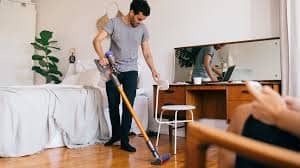Have you suffered water damage in your house? Although this is a common problem, it can cause a host of structural and health issues in your home. In extreme cases, it can even create mold and lead to breathing difficulties and other illnesses.
So before you can start your repair work, you’ll need to know what steps to follow, especially for cleaning and disinfecting. Read on to learn the first steps to take.
Safety First
Before starting any water damage clean-up, it is important to ensure your safety. Start by shutting off electrical sources to prevent the risk of electric shock or electrocution. If necessary, contact a professional to assess the safety of the space.
Stop the Source of Water
Inspect the area and identify the source of the water. It could be from a broken pipe, burst, overflowing appliance, or flooding. Make sure to take any necessary steps to stop the water from entering further into your home.
After making sure that both your safety and the source have been secured, it is time to start a home water damage cleanup.
Remove Standing Water
If there is standing water in your home, it’s crucial to remove it as soon as possible to minimize damage. You can use buckets, mops, or a wet/dry vacuum to extract the water.
If the water level is high, contact a professional to manage the situation. Click for more information on water extraction, water damage restoration, and carpet cleaning services.
Dry Out the Affected Area
Dry the affected area after removing the standing water. Place wet items near windows or dehumidifiers to promote drying. Windows and doors must be open to help with proper ventilation.
It’s important to dry the area thoroughly to prevent mold growth.
Salvage Personal Belongings
Remove any salvageable items from the affected area and move them to a dry location. Take extra care with valuable or sentimental items. If any items are severely damaged, document them for insurance purposes.
Taking these steps is the best way to begin the process of salvaging personal belongings after a water damage incident.
Clean and Disinfect
Once the area is dry, clean and disinfect all surfaces that come into contact with the water. Start by using a bleach-based household cleaner or a commercial disinfectant. Pay special attention to hot spots like doorframes, walls, and floors.
Settle on surfaces by gently dabbing and scrubbing the affected areas. If the damage is extensive, rinse the area with clean water, then apply the cleaner and let it dry thoroughly. This step is essential to prevent the growth of mold and bacteria.
Tips to Prevent Future Water Damage in Your Home
It’s essential to stay proactive with preventive measures to safeguard your home from water damage. This includes checking your pipes every now and then, fixing any roof damage, and keeping your gutters clean. It’s better to be safe than sorry!
Contact your local water damage repair service today for professional advice and support.
For more on this topic, visit our main blog!




Be First to Comment